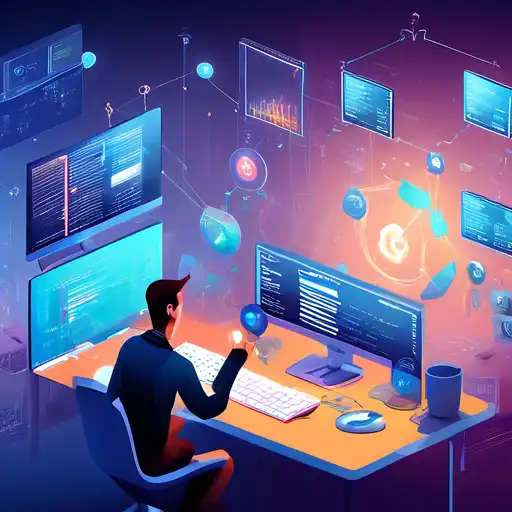Introduction to Software Development Trends
As we navigate through the year, the software development landscape continues to evolve at a rapid pace. Staying ahead of the curve requires an understanding of the latest trends that are shaping the future of technology. In this article, we delve into the most significant software development trends to watch this year, offering insights into how they can impact your projects and strategies.
1. Artificial Intelligence and Machine Learning Integration
Artificial Intelligence (AI) and Machine Learning (ML) are no longer just buzzwords but have become integral to software development. From automating routine tasks to enhancing user experiences with personalized recommendations, AI and ML are setting new standards. Developers are increasingly incorporating these technologies to build smarter, more efficient applications.
2. The Rise of Low-Code and No-Code Platforms
Low-code and no-code platforms are democratizing software development, enabling non-technical users to build applications with minimal coding knowledge. This trend is accelerating the development process and reducing the burden on professional developers, allowing them to focus on more complex tasks.
3. Increased Focus on Cybersecurity
With the growing number of cyber threats, cybersecurity has become a top priority in software development. Developers are now implementing advanced security measures from the initial stages of development to protect sensitive data and ensure user privacy.
4. The Adoption of Blockchain Beyond Cryptocurrencies
Blockchain technology is finding its way into various sectors beyond cryptocurrencies, including healthcare, finance, and supply chain management. Its ability to provide secure, transparent, and tamper-proof systems is driving its adoption in software development.
5. Progressive Web Apps (PWAs) Gain Popularity
Progressive Web Apps offer a mobile-app-like experience within a web browser, combining the best of web and mobile apps. Their offline capabilities, fast loading times, and ease of updates are making them a preferred choice for businesses and developers alike.
6. The Shift Towards Cloud-Native Development
Cloud-native development is becoming the norm, with more organizations leveraging cloud services for scalability, flexibility, and cost-efficiency. This approach allows developers to build and deploy applications faster, using microservices and containers.
7. DevOps and Continuous Integration/Continuous Deployment (CI/CD)
DevOps practices and CI/CD pipelines are essential for modern software development, enabling teams to deliver high-quality software at a faster pace. These methodologies foster collaboration between development and operations teams, streamlining the development lifecycle.
Conclusion
The software development industry is witnessing transformative changes, driven by technological advancements and changing user expectations. By staying informed about these trends, developers and businesses can leverage new opportunities to innovate and stay competitive. Whether it's integrating AI and ML, adopting blockchain, or moving towards cloud-native development, the future of software development is bright and full of possibilities.
For more insights into the latest in technology and software development, explore our technology section.
